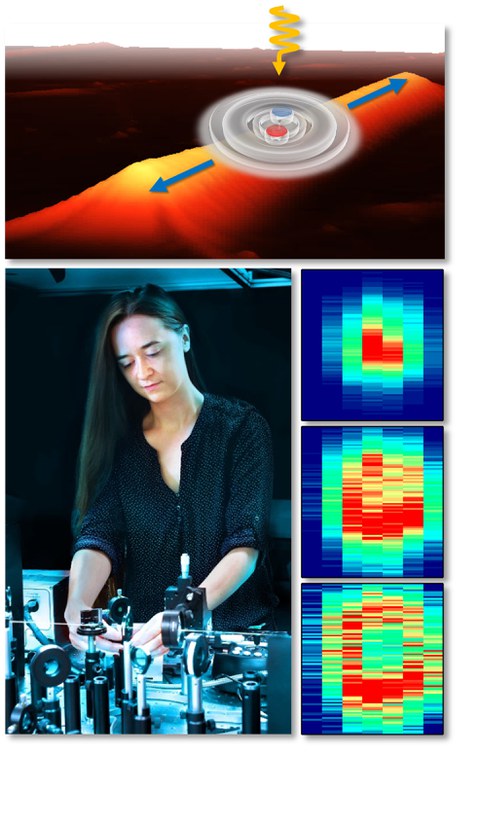Ultrafast microscopy
Transport of optical excitations in semiconducting solids plays a central role from both fundamental and technological perspectives. In systems with strong Coulomb interaction the propagation of optically injected carriers is dominated by excitons instead of free electrons or holes. These correlations affect the energy landscape and the mobility of the excitations. In addition, collective phenomena involving multi-exciton scattering, dressing of excitons with free charge carriers, as well as the specifics of the exciton bandstructures can substantially change the nature of the exciton propagation. Since excitons are the primary carriers of both energy and spin-valley information quanta in atomically-thin materials, understanding and manipulating their transport behavior is of key importance.
For our research we employ the technique of ultrafast microscopy to study the movement of optical excitations using combinations of pulsed laser sources and highly sensitive detectors. In our focus are linear and non-linear phenomena in the exciton transport [1] of both inorganic atomically-thin semiconductors [2] and hybrid perovskites [3], influence of the environment [4] and exciton diffusion at ultra-low densities [5] in disorder-free samples. We are interested in manipulating exciton propagation via dielectric and strain fields [6] and explore the nature of the exciton movement beyond classical behavior towards quantum transport [7] phenomena.
[1] M. Kulig & J. Zipfel et al. Phys. Rev. Lett. 120, 207401 (2018) https://doi.org/10.1103/PhysRevLett.120.207401
[2] R. Perea-Causín et al. Nano Lett., 19, 7317 (2019) https://doi.org/10.1021/acs.nanolett.9b02948
[3] J. D. Ziegler et al. Nano Lett. 20, 6674 (2020) https://doi.org/10.1021/acs.nanolett.0c02472
[4] A. Raja et al. Nature Nanotech., 14, 832 (2019) https://doi.org/10.1038/s41565-019-0520-0
[5] J. Zipfel et al. Phys. Rev. B, 101, 115430 (2020) https://doi.org/10.1103/PhysRevB.101.115430
[6] F. Dirnberger & J. D. Ziegler et al. Science Adv. 7, eabj3066 (2021) https://www.science.org/doi/full/10.1126/sciadv.abj3066
[7] K. Wagner et al. Phys. Rev. Lett. 127, 076801 (2021) https://doi.org/10.1103/PhysRevLett.127.076801

